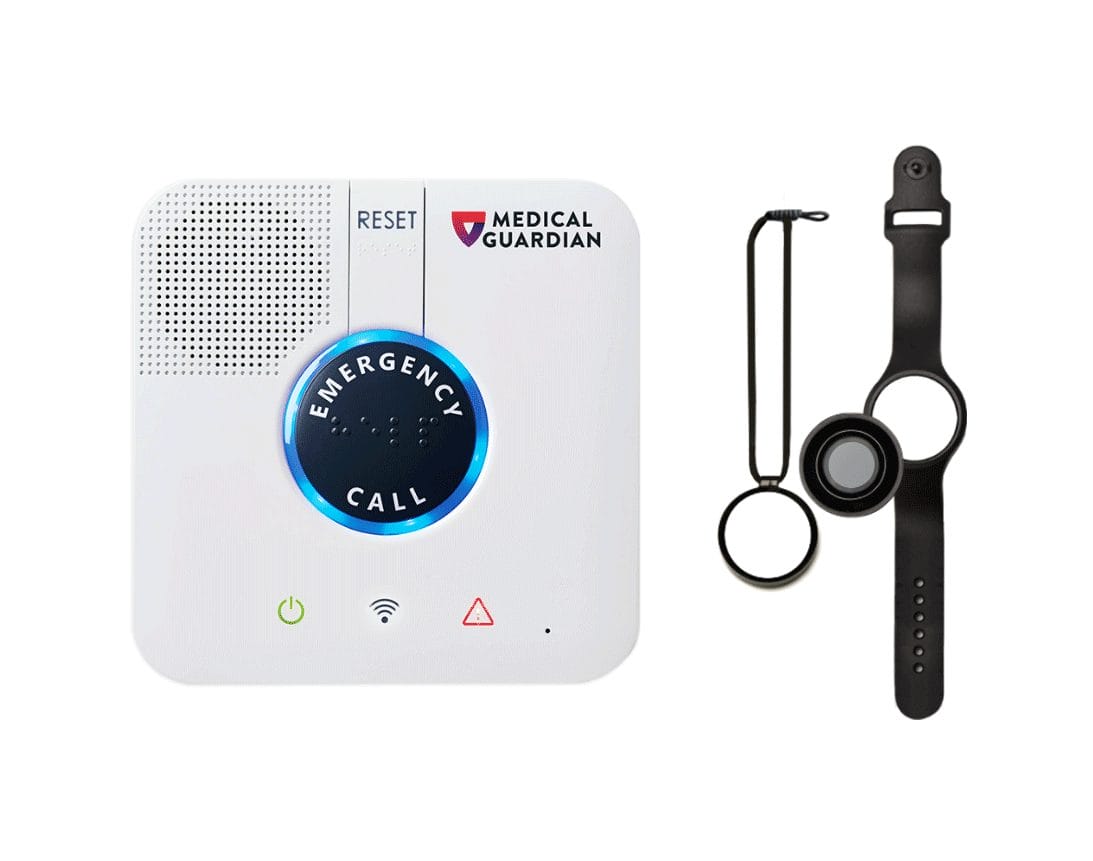
It is common for one spouse to have different care needs from the other as they age. Figuring out how to get services for each person can be challenging because long-term care options may involve moving to a residential facility, and all options have significant costs. Sometimes the couple has time to determine the best choice for their situation, and sometimes an injury or unexpected circumstance requires the couple to make a choice quickly. In either case, there is a solution for every couple. Here, we offer factors to consider when deciding and options for getting the care you and your partner need.
What type of help does each spouse need?
The first consideration for a couple deciding on long-term care is the level of care needed for both people. The difference between their needs may be small or large, which will determine where the couple lives and whether they can remain together. For example, if one person is healthy and the other has Alzheimer’s disease or another form of dementia, there may come a point when they need memory care. While some facilities allow couples to live in memory care together, it’s not always allowed or even advisable.
On the other hand, if the couple’s care needs are closer together, for example with one needing help with activities of daily living and the other not needing assistance, they may be able to remain in the home together with the help of home care services or they may move to assisted living together, depending on the facility’s guidelines.
Decide whether it’s possible to remain living together
The couple must also consider each other’s wishes while keeping in mind that the ideal scenario might not be available. Their biggest desire may be to remain together, and this could be possible depending on the long-term care setting necessary for the person with higher care needs. It also may be possible that one wishes to remain in the home even if the other must move to a facility to receive the care they need.
It could be possible to remain living together if home care services can meet the needs of the spouse who needs a higher level of care. Typically, home care providers are with their clients for a few hours per day. If the spouse needs round-the-clock assistance, the cost of 24-hour home care may be so great that the couple needs to consider another option that requires one spouse (or both) to move to a long-term care facility.
Estimate how long you or your spouse needs long-term care
When considering long-term care options, you should consider how long you or your spouse will need care. For example, if you are confident that your or your spouse’s care needs are temporary, choosing a care option you can easily change may make sense. You might use a combination of home health and home care at your residence to get the care needed without moving into a facility. If you or your spouse eventually requires a higher level of care than can be provided at home or if your care needs are more permanent, you could consider assisted living for one or both of you.
Assess your household’s financial situation
Financial constraints can limit your options, especially because long-term care can be expensive. Your financial situation will likely be a large part of your decision about long-term care and may dictate where you can receive this care and whether both people in the couple can move to long-term care together.
Also, if one spouse needs care while the other doesn’t necessarily need the help, the couple may need to move to assisted living (even when one spouse doesn’t need care) so the couple’s home can be rented or sold to help pay for the care. If you need to move right away, you can also use financial products like a bridge loan to help pay for care while you wait for your home to sell.
Determine each partner’s caregiving capacity
A common dilemma is when one partner overextends themself while caring for the other, whether at home or in the same apartment in assisted living. When this happens, it can result in caregiver burnout and significantly affect the caregiver’s physical and mental health. Separation during recovery or even in long-term care may be best for the caregiver’s health and well-being while the other partner gets the assistance they need.
Even if the couple can continue to live together, getting the right care for the spouse who needs assistance can positively impact the mental and physical well-being of the healthier spouse and the relationship itself.
Find out how much family members and friends can help
Families often help aging parents by assuming caregiving duties that augment professional support services. If you and your spouse don’t have nearby family or another support system to assist, the partner in need may benefit from a more intensive care setting, especially if one is struggling to care for the other.
Consider the amount of support your extended family and friends can provide. Hiring help or moving to senior living might be necessary if the tasks are too complicated, physically involved, or time-consuming for untrained caregivers to perform.
Long-term care options for couples
Below are different care options that may suit both of your needs. These senior living options offer flexibility to meet different care needs under one roof.
In-home care
Home care can work well when one or both people have care needs, such as assistance with activities of daily living. One of home care’s advantages is that you can remain in your home as a couple. However, if one person requires intensive nursing, home care will not be adequate, and a higher level of care might be needed. Also, home care can get expensive, depending on the required number of hours of care.
Independent senior living
Independent senior living covers various housing settings, including cottages, free-standing apartment buildings, and independent living in assisted living communities. Some communities will allow a couple to remain in independent living and add additional care services as needed without a move. Other communities will require a move to an assisted living apartment to receive a higher level of care.
Assisted living
Assisted living for one or both people is an option. In most communities, there is a base price with an additional add-on fee for the second person. Other care costs can be split if needs differ significantly. In the case of a tiered system, one person may be at level 4 (higher care needs) while the other is at level 1 (few care needs). Talk with the admissions coordinator to get a good idea of your costs so you can make a prudent decision.
Continuing care retirement community
Continuing care retirement communities (CCRCs) offer a range of care levels on one campus, including independent living, assisted living, memory care, and nursing care. If one of you needs assisted living and the other doesn’t, it may be possible for you to move to assisted living in a CCRC together, or one of you may stay in independent living while the other moves to a higher level of care on the same campus.
The above senior care options can meet a couple’s varying and evolving needs while they still live together. Though home care and independent living require the individuals to manage the care services on their own, they are realistic solutions to allow each partner in the couple to live safely and comfortably while continuing to live together. While moving to a senior living community like an assisted living or CCRC requires the couple to pack up their belongings and move to a facility, they can continue to live together while having all the care either of them will need and living low-maintenance lives. No one option is the best fit for all couples, so discussing the factors listed above can help determine the best way for individuals to receive the long-term care services they need.








